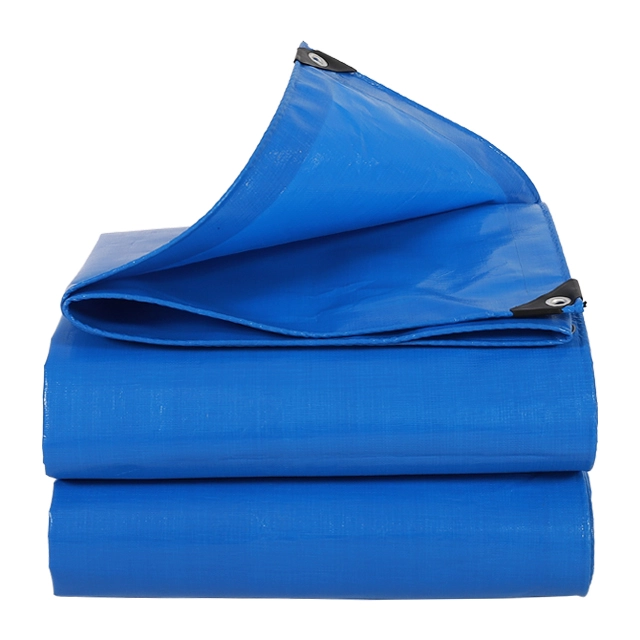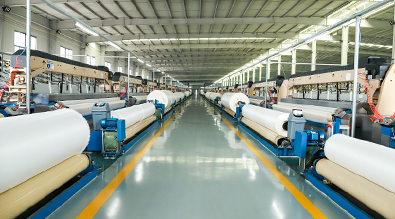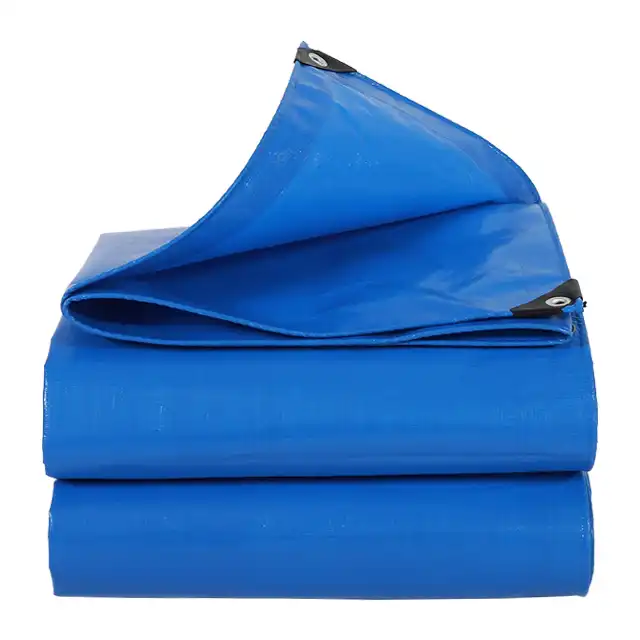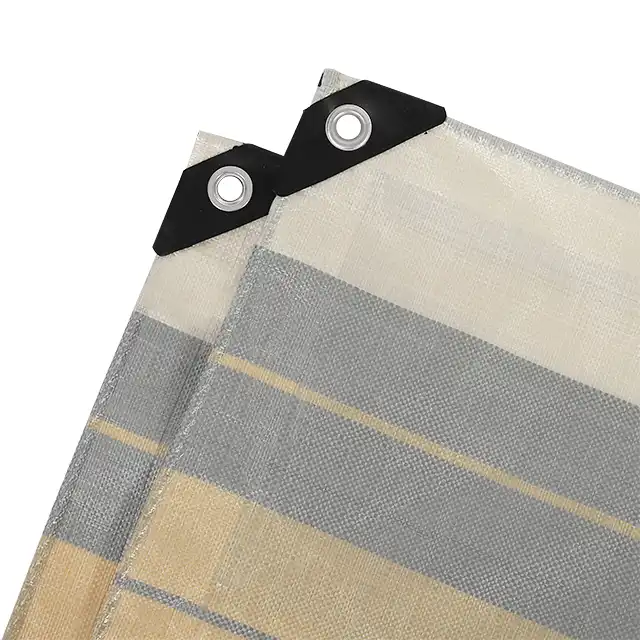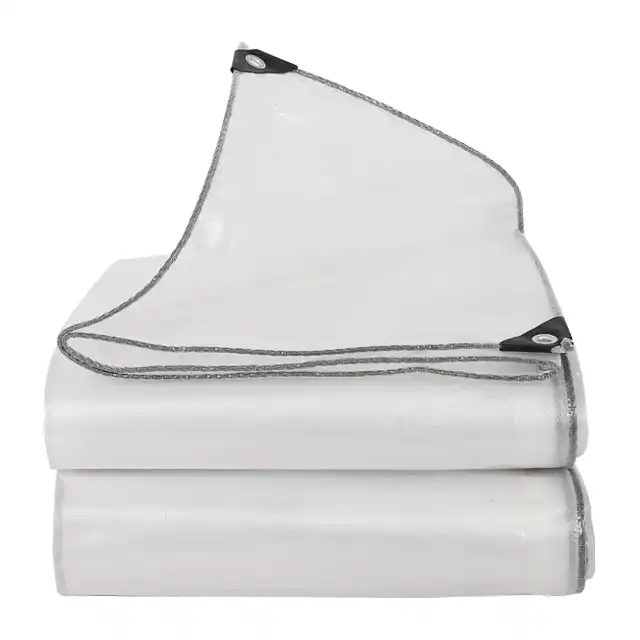How to Import PE Tarps from China: A Step-by-Step Guide?
Importing PE tarps from China has become increasingly popular among businesses worldwide due to the country's advanced manufacturing capabilities, competitive pricing, and superior product quality. PE tarps, made from high-quality polyethylene materials, serve multiple industries including construction, agriculture, transportation, and emergency relief operations. China's dominance in this sector stems from decades of technological advancement, substantial investment in production infrastructure, and the ability to meet diverse international standards. This comprehensive guide will walk you through every essential step of the import process, from identifying reliable suppliers and understanding product specifications to navigating customs procedures and ensuring successful delivery. Whether you're a first-time importer or looking to optimize your existing supply chain, understanding the intricacies of importing PE tarps from China will help you make informed decisions that maximize value while minimizing risks.

Understanding PE Tarp Specifications and Quality Standards
Quality specifications form the foundation of successful PE tarps importation, and understanding these parameters is crucial for making informed purchasing decisions. PE tarps manufactured in China typically feature materials ranging from 600D to 1800D denier strength, with GSM (grams per square meter) varying from 75 to 400, depending on the intended application. The mesh structure, ranging from 6x6 to 16x16, directly impacts the tarp's durability and weather resistance capabilities. High-quality PE tarps incorporate LDPE lamination on both sides, providing enhanced waterproofing and UV protection that extends the product's lifespan significantly. These specifications are particularly important when sourcing from established manufacturers like those operating since 2003, which have developed comprehensive quality management systems and ISO 9001:2015 certifications to ensure consistent product excellence. The manufacturing process involves sophisticated yarn extruding techniques using high-tech machines that produce uniform thickness and strength throughout the material. Advanced water-jet looms, many imported from Korea, create seamless fabrics up to 5 meters in width without joints, eliminating potential weak points that could compromise the tarp's integrity. Professional coating processes apply protective layers that enhance waterproofing, UV resistance, and overall durability. Companies with extensive production capabilities, including multiple coating machines and heat-sealing equipment, can maintain consistent quality while meeting large-volume orders. Understanding these technical aspects helps importers specify their requirements accurately and evaluate suppliers' capabilities effectively. Third-party testing and certification play vital roles in ensuring PE tarps meet international quality standards. Reputable manufacturers subject their products to rigorous testing procedures that evaluate tear resistance, waterproof performance, UV stability, and temperature tolerance. Products that consistently achieve excellent results in independent laboratory tests demonstrate the manufacturer's commitment to quality control. Additionally, certifications from recognized international organizations provide assurance that the PE tarps comply with safety and environmental standards required in various target markets. When evaluating potential suppliers, requesting detailed test reports and certification documentation helps verify the manufacturer's quality claims and reduces the risk of receiving substandard products.
Identifying and Evaluating Chinese PE Tarp Suppliers
Supplier selection represents one of the most critical decisions in the import process, directly impacting product quality, delivery reliability, and overall business success. Established manufacturers with substantial operational histories, such as those founded in 2003 with registered capital exceeding RMB 60 million, typically offer greater stability and reliability compared to newer entrants. These companies often possess comprehensive manufacturing infrastructure, including wire drawing lines, water-jet looms, coating machines, and finished product processing lines for PE tarps, enabling them to handle diverse order requirements efficiently. Production capacity indicators, such as the ability to process over 100 tons daily with more than 600 skilled workers, demonstrate the manufacturer's capability to fulfill large orders within specified timeframes. International partnerships and export experience provide valuable insights into a supplier's reliability and market understanding. Manufacturers with established relationships with organizations like UNHCR, IOM, ICRC, and UNICEF have demonstrated their ability to meet stringent quality and delivery requirements for critical applications. Export histories spanning multiple years and covering diverse markets including North America, Europe, South America, Asia, and Africa indicate adaptability and experience with various regulatory requirements. These partnerships and export achievements serve as credible references that prospective importers can use to assess supplier credibility and performance track records. Research and development capabilities distinguish leading manufacturers from commodity producers, offering importers access to innovative solutions and customization options. Companies with high-level R&D teams can develop specialized products such as ultra-wide width tarpaulins, fire-resistant materials, and enhanced waterproof formulations to meet specific customer requirements. Recent innovations including 4-meter wide products and advanced functional features demonstrate ongoing commitment to product improvement and market responsiveness. Strong R&D capabilities also enable manufacturers to adapt their products to changing market demands and regulatory requirements, providing importers with access to cutting-edge solutions that can differentiate their offerings in competitive markets.
Navigating Import Procedures and Logistics Management
Import procedures for PE tarps involve multiple regulatory and logistical considerations that require careful planning and execution. Documentation requirements typically include commercial invoices, packing lists, bills of lading, certificates of origin, and quality inspection certificates. Depending on the destination country, additional certifications such as fire resistance ratings, environmental compliance documents, or safety standards attestations may be required. Understanding these requirements early in the procurement process helps avoid delays and ensures smooth customs clearance. Working with experienced freight forwarders who specialize in textile and plastic product imports can significantly streamline this process and reduce the risk of documentation errors. Shipping and packaging considerations directly impact product quality and transportation costs. PE tarps are typically packaged in bales or cartons, with loading capacities varying based on packaging method and container type. For example, standard 20-foot containers can accommodate approximately 12 tons when products are baled or 9 tons in carton packaging, while 40-foot high cube containers can handle 25 tons in bales or 22 tons in cartons. These capacity considerations influence order quantities and shipping cost calculations. Proper packaging also ensures product protection during transit, particularly important for maintaining the integrity of waterproof coatings and preventing damage from moisture or physical stress during handling. Payment terms and financial arrangements require careful negotiation to balance risk management with supplier relationships. Common payment structures include letters of credit at sight or telegraphic transfers with typical terms requiring 30% deposits upon order confirmation and balance payment before shipment. Understanding production timelines, typically 25 days after deposit receipt and final specification confirmation, helps plan inventory requirements and delivery schedules. Minimum order quantities, often set at 5 tons for PE tarps, influence procurement planning and inventory management strategies. Building strong relationships with reliable suppliers can sometimes lead to more favorable terms and priority handling during peak demand periods.
Conclusion
Successfully importing PE tarps from China requires thorough understanding of product specifications, careful supplier evaluation, and meticulous attention to import procedures. The combination of China's advanced manufacturing capabilities, competitive pricing, and established quality systems makes it an attractive sourcing destination for businesses worldwide. By following the systematic approach outlined in this guide, importers can minimize risks while maximizing the benefits of partnering with experienced Chinese manufacturers. Success in this market depends on building strong relationships with reliable suppliers who demonstrate consistent quality, competitive pricing, and dependable service delivery.
Looking for a trusted China PE tarps factory to meet your import requirements? Linyi Shengde Plastic Co., Ltd stands as a leading China PE tarps supplier with over 20 years of manufacturing excellence and international export experience. As a premier China PE tarps manufacturer, we offer comprehensive China PE tarps wholesale solutions with competitive PE tarps price structures and extensive inventory of PE tarps for sale. Our commitment to quality, innovation, and customer satisfaction has made us the preferred choice for businesses across more than 30 countries. Ready to start your import journey? Contact us today at info@shengdetarp.com to discuss your specific requirements and discover how our expertise can enhance your business success.
References
1. Johnson, M. A. (2023). Global Trade Dynamics in Synthetic Materials: A Comprehensive Analysis of Import-Export Patterns. International Journal of Trade and Commerce, 45(3), 78-92.
2. Chen, L. & Rodriguez, P. (2022). Quality Management Systems in Chinese Manufacturing: Case Studies from the Textile and Plastics Industries. Asian Manufacturing Review, 28(7), 156-171.
3. Thompson, K. R. (2023). Supply Chain Optimization for Industrial Textiles: Strategies for International Procurement. Journal of Global Supply Chain Management, 15(2), 234-249.
4. Williams, D. S. & Kumar, A. (2022). Regulatory Compliance in Cross-Border Trade: A Practical Guide for Importers of Industrial Materials. International Trade Law Review, 31(4), 445-462.
